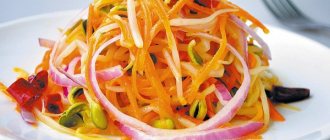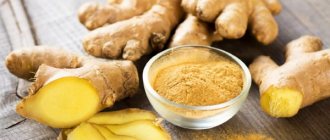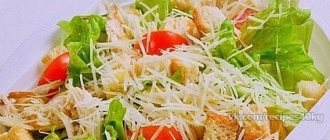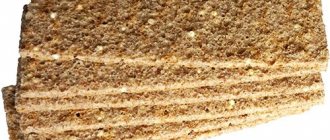Cottage cheese is very healthy, it contains vitamins, minerals, beneficial bacteria, etc.
It is recommended to be included in the menu for adults, children, the elderly and sick people.
The question of whether it is possible to eat cottage cheese on a diet while losing weight is quite relevant.
According to nutrition experts, it is even recommended to include the product in the menu; the main thing is to know how to choose it correctly, when to eat it and what to combine it with.
What the experts say
According to nutritionists, cottage cheese is a valuable product that can itself become the basis for a diet. There are various methods for losing weight using fermented milk products. With regular consumption, the functions of the gastrointestinal tract are normalized, the condition of the skin, hair, and nails improves, thanks to the high calcium content.
Expert opinion
Evgeniy Kislitsa
Practicing surgeon. Certified massage master. Two-time vice-champion and heavyweight champion of regional kettlebell lifting competitions.
Cottage cheese is especially useful for those people who have problems with the growth of bone and cartilage tissue, persons under 24-25 years of age (due to the still active growth of bone tissue), athletes involved in heavy and contact sports (stimulates the growth of bone and cartilage tissue, allows you to accelerate the processes of restoration of these tissues after physical exertion and/or injury). It is strongly recommended to eat cottage cheese during recovery from bone fractures or damage to the joint apparatus (especially cartilage). Because due to the high calcium content and the presence of vitamin D in the product, the restoration of damaged tissues is accelerated. Mature and elderly people, regardless of the severity of physical activity, are recommended to regularly eat cottage cheese. After all, it not only allows bone tissue to recover faster, but also prevents the leaching of calcium from the bones, which is necessary for the formation and maintenance of the strength of bone beams (they form the structure of the bone). The indication is justified by the physiological characteristics of the body at this age, when all people experience a decrease in the calcium content in the bones, causing them to become fragile, easily injured and broken. At the same time, at this age, the ability of bones to recover decreases, and the activity of their resorption (splitting) processes increases. Calcium prevents bone resorption processes at any age.
Some people who are losing weight don’t know how to eat it correctly to lose weight. To ensure that the product brings only benefits, experts advise following the following rules:
- Use only fresh product. Old cottage cheese not only loses its beneficial properties, but can also cause food poisoning or the development of an infectious disease, since microorganisms actively multiply in it.
- Give preference to cottage cheese with a fat content of 1.8 to 5%.
- It is not recommended to combine lactic acid products with sugar. It is better to use sour cream, yogurt (low fat), honey, or any plant products.
- Eat milk concentrate 1-2 times a day.
- Before consumption, make sure you are not allergic to lactose.
- It is better to eat cottage cheese in the first half of the day.
If a person adheres to these recommendations, he will be able to normalize his weight and improve his health.
Important! To absorb calcium from dairy products, vitamin D is necessary. In the body, it is produced in sufficient quantities under the influence of ultraviolet radiation. The natural source of ultraviolet radiation is sunlight. Therefore, in order for the microelement to be maximally absorbed by tissues, it is necessary to regularly go outside and take walks in the fresh air. Complexes will be an alternative source of vitamin D, but the availability of this substance is lower in them. Therefore, the best option is to be outside.
Anna Moroz, trainer
According to a highly qualified trainer in fitness and bodybuilding, cottage cheese is not suitable for dinner if a person wants to lose weight. This is due to the fact that during sleep the body recovers, this process is accompanied by the production of somatropin (growth hormone). This substance promotes the breakdown of fat. Milk concentrate contains casein, which provokes an increase in insulin in the blood; this hormone inhibits the action of somatropin, as a result, fats burn more slowly. In addition, due to a decrease in the synthesis of somatotropin, the activity of restoration processes in tissues, especially muscles, decreases, and this leads to the fact that muscle growth proceeds more slowly and in smaller volumes than is possible with the recommended time consumption of cottage cheese. Therefore, it is better to eat this product during the day.
Yulia Bastrygina, nutritionist
According to a leading nutritionist, it is important to choose the right fermented milk product. Therefore, before purchasing, study the composition; it is recommended to buy a natural product. During the diet, it is better to avoid sweet curd products. The nutritionist advises purchasing cottage cheese with a fat content of 2 to 4%; it contains more nutrients and will not spoil your figure. High-quality milk concentrate cannot be cheap, so do not be tempted by tempting promotions, rather think about your goal. The optimal portion of cottage cheese for those losing weight is 200 g per day.
Selezneva Ksenia, nutritionist
A well-known nutritionist and gastroenterologist advises avoiding low-fat cottage cheese when losing weight. It has worse taste, it contains chemical additives (flavors, stabilizers, sweeteners), and sometimes trans fats. After eating it, a person feels even more hungry, since cottage cheese with zero fat content is saturated with carbohydrates, which are quickly absorbed, forcing the person to eat it again. And the salts in milk concentrate retain excess fluid, straining the heart and kidneys. Give preference to semi-fat cottage cheese (1.8-5%). It is more natural and contains beneficial substances. And in order not to gain weight by consuming it, just control the portion - no more than 200 g per day.
Be sure to check out:
Is it possible to eat corn while on a diet: benefits and harms? Get a complete set of proteins, fats and carbohydrates from Doshirak dietary products on a diet: is it possible to eat fast food products? Is it possible to eat soy sauce while on a diet: all the myths and truth
Effect on calorie content of products added to cottage cheese
The calorie content of cottage cheese is influenced by the products that are added to it to improve the taste and enhance the beneficial properties. Most often it is eaten with dried fruits, nuts, honey, various types of preserves and jams, fresh berries and fruits, vegetables and herbs.
The table shows the calorie content of some products that can be added to cottage cheese.
Product (100 g) Calories (kcal)
| Nuts | |
| walnut | 698 |
| peanut | 571 |
| almond | 694 |
| hazelnut | 707 |
| cashew | 633 |
| Dried fruits | |
| dried apricots | 234 |
| raisin | 262 |
| prunes | 245 |
| dates | 305 |
| figs | 270 |
| Candied fruit | |
| a pineapple | 339 |
| banana | 346 |
| strawberry | 286 |
| orange | 300 |
| melon | 319 |
| Honey | |
| lime | 323 |
| buckwheat | 301 |
| acacia | 335 |
| sunflower | 320 |
| floral | 303 |
Cottage cheese can be used not only as an independent product, but also as a basis for many dishes. For those who are on a diet, it is important to know the caloric content of each of them.
- Dumplings with cottage cheese calorie content - 203 kcal when using low-fat cottage cheese as a filling (with a fat content of 19% - 284 kcal / 100 g).
- Cheesecakes made from low-fat cottage cheese (2%) contain 183 kcal.
- Cottage cheese casserole with a low percentage of fat - 168 kcal (with a fat content of 5 - 9% - from 213 to 249 kcal).
- Cottage cheese with sour cream (20% fat or more) is from 139 to 228 kcal.
An alternative to traditional options that are quite high in calories are dietary dishes. For example, cheesecakes can not be fried in oil, but baked in the oven.
An easy-to-prepare cottage cheese omelette is a high-protein, low-calorie dish. A low-calorie cottage cheese and carrot casserole will also diversify the menu.
Another healthy high-protein dish for dietary nutrition is called “belip” (“without lipids,” i.e., without fat): low-fat cottage cheese, cod fillet, raw chicken protein and onion are passed through a meat grinder and then baked in the form of meatballs.
Benefits, harm, composition, energy value, contraindications
To understand how useful a lactic acid product is, you need to study its composition:
- Proteins, fats, carbohydrates (BJU).
- Retinol.
- Thiamine, riboflavin, vitamin B9.
- Vitamin C.
- A nicotinic acid.
- Iron.
- Calcium.
- Potassium.
- Magnesium.
- Unsaturated fats.
- Organic acids.
- Water.
- Saccharides, etc.
There are 4 types of milk concentrate: low-fat, semi-fat, full-fat, granular.
The energy value of each type is different:
- Low-fat cottage cheese (up to 1.8%) contains from 90 to 105 kcal per 100 g.
- Bold (from 1.8 to 9%) – from 135 to 160 kcal/100g.
- Fat (from 9 to 22%) – 230 kcal/100g.
- Grainy – 150 kcal/100g.
Beginners losing weight are interested in the question of which cottage cheese is better. If you want to get rid of extra pounds and improve your health, then choose a product with a fat content of 1.8 to 5%. It is healthier (calcium, vitamins, and minerals are absorbed faster), tasty, and will not cause fat accumulation (with moderate consumption). Cottage cheese with a fat content of 9% is also allowed for weight loss, the main thing is not to eat more than 150 g per day.
The fat content of milk concentrate affects its composition, for example, half-fat cottage cheese contains 16 g of proteins, 9 g of fat, 3 g of carbohydrates.
Fermented milk product has the following beneficial properties:
- Quickly absorbed.
- Accelerates metabolism and fat burning.
- Accelerates the processes of restoration of cells of the gastrointestinal tract.
- Stabilizes blood glucose levels.
- Being a source of protein, it allows you to maintain the balance of extra- and intracellular fluid, thereby preventing the development of many dangerous diseases, including the cardiovascular and urinary systems.
- Strengthens bones.
- Positively affects the functions of the cardiovascular and nervous systems.
- Strengthens the immune system.
- Maintains hemoglobin levels. Accelerates the formation of red blood cells (erythrocytes).
- Improves vision.
The grain and semi-fat product helps to lose weight and is suitable for feeding children, pregnant women, nursing women, the elderly, and sick people. And full-fat milk concentrate is suitable for building muscle mass. However, due to the high content of carbohydrates and fats in it, such a product must be consumed strictly within the portions determined for a specific weight, height and physical activity, otherwise you can gain not only muscle, but also excess fat tissue.
Despite the benefits of cottage cheese, it can be harmful:
- There is a risk of allergy if you are hypersensitive to lactose.
- With regular consumption of fatty foods (from 9%), the level of cholesterol increases and the likelihood of obesity or atherosclerosis increases. The latter leads to the formation of atherosclerotic plaques and the development of oxygen starvation in the tissues.
- Cottage cheese aggravates the patient’s condition with pathologies of the kidneys, gall bladder, and urolithiasis.
- Grainy and low-fat cottage cheese should not be eaten if there are gastrointestinal disorders.
- An expired product provokes intoxication. If the milk is poorly processed, the milk concentrate may be contaminated with pathogenic microbes (Escherichia coli).
Important! Only with proper and moderate consumption will cottage cheese bring benefits and speed up weight loss.
Expert opinion
Evgeniy Kislitsa
Practicing surgeon. Certified massage master. Two-time vice-champion and heavyweight champion of regional kettlebell lifting competitions.
Excessive consumption of fatty cottage cheese leads to the formation of atherosclerotic plaques on the walls of arterial vessels that carry oxygen-rich blood to the tissues. As a result, they do not receive the amount of oxygen necessary for correct functioning, and their “work” is disrupted. The condition can be chronic or acute. In the first case, the body adapts to the state of tissue hypoxia (lack of oxygen in them). And in order to compensate for oxygen transport, new vessels begin to form, supplying oxygen to the tissues. The acute condition is much more dangerous and can be life-threatening. In this case, the body’s tissues are not able to quickly adapt to working in hypoxic conditions and begin to die. A striking example is myocardial infarction. Also, atherosclerotic plaques lead to the formation of blood clots on the walls of blood vessels. In addition to the fact that a clot disrupts blood flow in the vessels, it can also break off and be transported through the bloodstream. When a blood clot reaches a vessel through which it cannot pass, it becomes blocked and acute tissue hypoxia develops, which leads to tissue death.
Does low-fat cottage cheese help you lose weight?
The benefit of low-fat cottage cheese for dietary purposes lies, first of all, in its low calorie content.
The dietary properties of light fermented milk product are actively used in fasting diets to reduce excess weight and normalize the functioning of the gastrointestinal tract.
With a mono-diet, it will be useful to increase food intake up to 6 times, with smaller portions.
Examples of fasting days using low-fat cottage cheese:
- Curd and kefir. Meals during the day are divided into 6 times, 100 g of low-fat cottage cheese and 150 ml of low-fat kefir;
- Fermented milk. The composition of the product consists of 60 g of low-fat sour cream, 600 g of low-fat cottage cheese, 100 ml of milk, divided into 4 doses. You can also use rosehip decoction as a drink - 3 tbsp.
Low-fat product: myth and reality
The fat content of a low-fat product differs:
- Low-fat (0%): BZHU – 71 kcal/100g, proteins – 16.5 g, fats – 0 g, carbohydrates – 1.3 g.
- Low-fat (0.1%): BJU: B – 11.9 g, F – 0.1 g, U – 3.61 g, calorie content – 76 kcal.
- Nutritional value of low-fat cottage cheese (1%) – 80 kcal, B – 16.5 g, F – 1.1 g, U – 1.8 g.
- The energy value of a product with a fat content of 1.8% is 101 kcal, B - 18 g, F - 1.8 g, U - 3.3 g.
Quite popular for weight loss is cottage cheese, the fat content of which is 2%, it contains 103 kcal/100g, 18 g of proteins, 2 g of fat, 3.3 g of fat.
There are many myths about low-fat fermented milk products:
- Cottage cheese with 0% fat content does not contain lipids. All products (except green tea) contain a small amount of fat. Fats are necessary for the formation of a number of biologically active substances, the formation of cells and their functioning. Therefore, their deficiency causes much more harm to the body than excess.
- A low-fat product only brings benefits. Fats are useful for the normal functioning of the body; in their absence, the condition of the hair and skin deteriorates, and the functionality of the reproductive system of women is disrupted. Low-fat cottage cheese may contain chemical additives as well as artificial trans fats. With frequent use, metabolism is disrupted, immunity is weakened, and there is a risk of diabetes.
- Low-fat fermented milk product gives a feeling of fullness. In fact, after consuming it, a person feels hungry within a few minutes.
- A low-fat product contains protein. Its amount in this product is significantly less than in regular cottage cheese.
Low-fat cottage cheese is recommended for use for hypertension, as well as for people with high cholesterol concentrations to prevent atherosclerosis. Healthy people can afford milk concentrate with a fat content of 1.8-5%.
Attention! Trans fats are carcinogens – substances that provoke the development of malignant tumors. Therefore, it is strongly recommended to avoid consuming trans fats.
How is cottage cheese defatted?
The process of making a low-fat fermented milk product is no different from creating a regular one. The difference is that skim milk is used as the starting material.
The creation technology involves several stages:
- clarification, pasteurization and cooling of milk to the required consistency;
- adding a special starter (or rennet, which is used as an alternative method);
- milk fermentation process;
- cutting the formed clot;
- cooling the resulting mass.
This method is traditional, but to speed up the process of whey separation they resort to additional heating of the milk mass. This technology is also available at home. To do this, pre-prepared milk is left in a saucepan in a warm place for several hours (overnight is possible), until it sours. Then the semi-finished product is heated and the resulting whey is separated.
Curd
When dieting, it is not recommended to consume curd mass. Firstly, it contains more calories, and secondly, numerous chemical additives are used during its preparation, and poor-quality raw materials may be used, which significantly increases the risk of food poisoning or the development of an infectious disease.
High-quality cottage cheese is created on the basis of cottage cheese, butter, sugar, and dry fruits. The label indicates the composition, calorie content, and manufacturer's address. It is usually stored for about 3 days.
It contains beneficial bacteria, nutrients, vitamins, minerals, and organic acids. Its only drawback is its high calorie content.
Attention! If the shelf life of the curd mass is from 5 to 7 days, then you have a low-quality product that can cause poisoning, allergies and other disorders.
How to choose ingredients for low-fat cottage cheese
Low-fat cottage cheese (calorie content should be checked on the manufacturer's packaging) is indicated for people who want to lose extra pounds, play sports or simply take care of the beauty of their figure. The best option would be a home-cooked dish.
The factory product, obtained from skim pasteurized milk and cultured starter (lactic bacteria), undergoes heat treatment established by technological standards and is passed through a special apparatus, using which cream separation is achieved. This creates the basis for the future dietary cottage cheese.
To prepare such food at home, kefir or milk is used.
It should be taken into account that store-bought skim milk is most suitable as a base raw material. Farm or natural product purchased at the market contains a high percentage of fat. Food derived from such a base will not benefit people who are overweight or have certain health problems.
Industrially produced milk does not require infusion and pasteurization, therefore it is recognized as the best raw material for producing low-fat cottage cheese. As for its preparation from kefir, the only requirement for such an initial component is its fresh quality. Sugar syrup is sometimes added to separate the whey.
For people suffering from a lack of calcium in the body, a suitable method for preparing low-calorie cottage cheese from skim milk and liquid sodium chloride (rock salt), which can be bought at a pharmacy. For 1 liter of liquid raw materials you will need 1 ampoule.
Many thrifty housewives consider it possible to use sour milk as a base. However, it should be borne in mind that such an ingredient may contain bacteria dangerous to the human body. A curd product obtained from such raw materials can cause poisoning and digestive disorders. Don't risk your own health!
How to use, should you eat at night and with what?
Doctors recommend eating cottage cheese in the morning and afternoon, as it takes a long time to break down (about 3 hours). However, many people feel hungry in the late afternoon. Then the question arises whether the product can be eaten in the evening. For dinner you are allowed to consume 2-3 tbsp. spoons of protein concentrate.
Not everyone who is losing weight knows whether they can take milk concentrate at night. A person can eat a small portion of the product 3-4 hours before going to bed. Otherwise, it will be difficult for him to fall asleep due to the feeling of heaviness. If you consume cottage cheese after the specified time, most of the carbohydrates from the product will turn into fat deposits.
Those losing weight are interested in the question of what to eat cottage cheese with. During the day it can be combined with honey, fresh and dry fruits, berries, vegetables, and herbs.
The question of what to eat milk concentrate with in the evening is quite relevant. A salad of cucumbers, tomatoes, paprika, cottage cheese, kefir, herbs and garlic will relieve hunger for a long time. At night, you can mix milk concentrate with honey, raisins, dried apricots, or make a curd and berry smoothie. The main thing is to eat 3 hours before bedtime and in a minimal portion.
You can eat low-fat cottage cheese at night, especially if you have already consumed a portion of a low-fat product during the day.
Nutritional properties
Is there a difference between types of cottage cheese? Undoubtedly.
So, this tasty white mass is classified according to its fat content. And then it’s a matter of everyone’s taste. It all depends on physiology, upbringing and worldview. For example, our village great-great-grandmothers were convinced that the fattier the cottage cheese, the better it is. And they can be understood. They worked in the fields from dawn to dusk, and simply had to eat in accordance with their lifestyle. I also advise you to read about another interesting milk product, just a slightly different milk, about kumiss.
But modern fighters for grace, however, do not always agree with their uneducated ancestors. Therefore, they prefer to eat low-fat dietary soft and tender cottage cheese or a low-fat three (or less) percent product.
To create a complete picture, I’ll explain that half-fat cottage cheese contains 9% fat, while truly fatty cottage cheese contains as much as 18 (in some cases, even more) percent.
Low-fat cottage cheese is made from appropriate milk, that is, low fat content, and as a result of fermented milk fermentation, the result is exactly what is intended.
Diet dishes
You can prepare many delicious and low-calorie dishes from cottage cheese:
- Sandwiches:
- chop the greens;
- mix cottage cheese with sour cream (low fat);
- peel and crush a few cloves of garlic;
- add herbs and garlic to the curd mixture;
- Spread the mixture onto the diet bread and place a piece of tomato, cucumber or paprika on top.
- Curd and vegetable salad with avocado:
- pick Chinese cabbage with your hands;
- chop avocado, tomatoes;
- mix grainy cottage cheese with vegetables, spices, olive oil.
- Fruit salad with cottage cheese:
- cut peach, banana, kiwi;
- add cottage cheese, unsweetened yogurt to the fruit, stir.
- Casserole:
- mix chopped herbs with garlic, salt, pepper;
- add cottage cheese there, stir;
- grind hard cheese (low fat), add to the base;
- beat the whites until thick foam is obtained, mix with the remaining ingredients;
- Pour the mixture into a baking tray and bake until golden brown.
Cottage cheese goes well with many foods, the main thing is to choose low-calorie ingredients.
Important! Since cottage cheese is a protein product, its abuse leads to disruption of the kidney filtration apparatus even in healthy people. Those who have kidney pathologies can consume cottage cheese only if they strictly adhere to the portions recommended by the doctor.
You may also be interested in: How to properly consume chia seeds for weight loss
Dairy products for weight loss
Standards for consumption and storage of cottage cheese
This dairy product is undoubtedly healthy and helps you lose weight, but it is still a natural protein-calcium concentrate, and therefore you should observe moderation when consuming it. Excess protein can negatively affect kidney function.
And a product with high fat content increases cholesterol levels, which leads to obesity and the development of atherosclerosis. Granular cottage cheese is more useful, although it also has some contraindications, such as individual intolerance.
According to nutritionists, the average protein intake is 0.86 - 0.95 g/kg body weight. That is, the average person weighing 55 kg can consume 47 g of protein per day. But since it is known that 10 - 15% of protein from food is not absorbed, the amount should be slightly increased (about 50 g).
A pack of cottage cheese contains approximately 32 g of protein. This means that 1.5 - 2 packs is the daily requirement of protein for such a person, without additional products. But during the day we usually eat other protein foods, so experts recommend eating no more than 200 g of cottage cheese per day.
Another important point is the shelf life of cottage cheese. This product is unstable, so even with slight violations of the temperature regime, its quality deteriorates significantly.
- The shelf life of homemade, full-fat and low-fat cottage cheese at temperatures from 2 to 6 °C is 36 hours.
- Store-bought (with stabilizers) can be stored for 7 days, heat-treated - 14 days.
- Curd products are stored for 36 hours at a temperature of 0 - 2°C.
Cottage cheese is an important food product, one of the main sources of protein in our diet, along with meat and fish. It stimulates the growth of new tissues, improves fat metabolism, strengthens the nervous system, has a beneficial effect on the immune system and has many other beneficial properties.
Main conclusions
As you can see, cottage cheese can be consumed when losing weight, the main thing is to follow the following rules:
- Choose a fresh, natural product.
- Give preference to semi-fat lactic acid concentrate from 1.8 to 5%, it will bring more benefits than low-fat.
- Eat cottage cheese 1 or 2 times a day, no more than 200 g.
- Eat cottage cheese and dishes made from it in the first half of the day.
- In the evening, consume the lactic acid product 3-4 hours before bedtime.
- Combine milk concentrate with honey, dry and raw fruits, vegetables, and herbs.
When consumed correctly, cottage cheese satisfies hunger, saturates the body with useful substances, accelerates metabolism and fat burning. If you have kidney disease, it is recommended to consult your doctor or urologist or nephrologist regarding the rationality of consuming cottage cheese.
Secrets of making low-fat cottage cheese
It is necessary to have such a product in the refrigerator when there are small children or elderly people in the family. To obtain dietary cottage cheese, you need to heat 1 liter of low-fat (2.5%) milk (up to 50 °C). Add 1.5 tbsp. l. calcium chloride or 3 g (½ tsp) of this substance in powder form. When the liquid curdles (formation of curd grains), carefully mix the composition.
Season the completely cooled mass with salt (to taste), and strain off the whey. The tender dish is ready to eat.
A few secrets of home cooking:
- powdered milk is not suitable for such purposes under any circumstances - only natural or pasteurized;
- The acidity of the final product depends on the decanting process, when the whey is separated. It is better to start preparing food in the evening, since overnight all the liquid will end up in the bowl placed for it. To speed up this stage, you need to attach a weight to the gauze bag with the future cottage cheese;
- for heat treatment of raw materials, you should use exclusively enamel dishes or stainless steel pans without any damage;
- In order for the finished cottage cheese to last longer, it needs to be placed in a convenient container and compacted a little - to remove all air voids;
- Your favorite fruits and berries, a pinch of cinnamon, whipped cream or chocolate sauce will help enrich the taste of the fermented milk product. Cranberries and strawberries, currants and prunes, hazelnuts and coconut flakes are elements with which you can not only decorate curd dishes, but also supplement them with vitamins and other useful substances.
Low-fat cottage cheese (the calorie content of the food depends on the composition of the raw materials used) will turn out to be as tasty as possible if, after the end of the heat treatment, it is given time to settle well. At the same time, keep the dishes open or under a gauze cloth.
Features of cottage cheese production technology
At the beginning of the production stage there are two ingredients - skim milk and cream. The first component contains all the protein and carbohydrates, the second contains fat and some vitamins.
Next, during the fermentation process, the protein in the milk forms a dense mass, and water and other components are released in the form of whey. The whey is then removed, along with most of the lactose.
At the final stage, the dense protein mass is mixed with cream to obtain the required fat content. This method of production is called separate. Manufacturers often add palm oil instead of cream to reduce the cost of the product.
Why is it harmful? Studies of baby food containing palm olein (a fraction of palm oil) have shown its negative effect on the absorption of calcium in the intestine.
How to make at home
There is nothing particularly difficult in preparing a homemade product yourself; such cottage cheese is no worse than store-bought. You just need to skim it: take good quality milk and put it in the refrigerator for 3-4 hours, the thick light cream will rise to the top and can be removed.
There are several more ways to curdle milk:
- Using calcium chloride. Special ampoules are sold at the pharmacy. The milk needs to be heated and calcium added to it; curdling will happen instantly. To remove excess sugar, you need to throw the mass onto a sieve or cheesecloth and let the whey drain, but you can eat this kind of cottage cheese without folding it.
- Option for freezing sour milk. The expired drink is placed in the freezer, allowed to freeze completely, and then the resulting ice is thrown onto cheesecloth. In this case, the cottage cheese turns out to be more creamy in consistency, whey-like and reminiscent of cottage cheese.
- Natural fermentation. Milk in a clean container is simply placed in a warm place, waiting until it sours and a curd begins to form. Then, it is heated and, in turn, is also tilted to remove the liquid.
- You can use not only milk as a base, but also fermented milk products such as kefir or fermented baked milk. They need to be heated in a water bath and separation into cottage cheese and whey will occur. It is important not to overdo it: as soon as flakes form, the heating stops and the mass remains to cool in the same container. Then you can discard the curd, but when it cools completely, the curd lump turns out to be quite dense, it is easy to remove it from the whey without any extra effort.
Low-fat cottage cheese is delicious to eat without heat treatment, arrange fasting days on it and use it as a basis for a diet.
For children and adults with intolerance to cow's milk, goat's milk is recommended, from which cottage cheese can be prepared in similar ways. Do not forget that it is impossible to make anything fermented from drinks with a long shelf life.
Harm
Cottage cheese is a fairly versatile product that has a number of benefits, especially for people who are lactose intolerant. Although the product helps reduce weight, regular use may lead to weight gain. It can also be quite a heavy product for people with gastrointestinal diseases and a tendency to constipation.
In people suffering from arthritis, intensive consumption of cottage cheese can trigger the development of joint pain. The sodium content in 100 grams of fermented milk product is 40% of the body's daily requirement for this microelement, which plays an important role in maintaining optimal water-salt balance in cells.
With excess sodium, some negative aspects may appear in the form of:
- water retention;
- swelling;
- swelling;
- weight gain.
Such side effects may be temporary, but with frequent cottage cheese diets, when the product becomes the main source of nutrition and excessive amounts of sodium enter the body, quite complex problems can develop.
Namely:
- high blood pressure;
- kidney dysfunction;
- heart failure;
- risks of heart attack and stroke.
Cottage cheese does not contain fiber. The recommended daily intake of dietary fiber is 25 grams for women aged 19 to 50 years and 40 grams for men aged 19 to 55 years. Lack of fiber negatively affects the functioning of the gastrointestinal tract and can lead to the development of constipation, diabetes, vascular atherosclerosis and other undesirable consequences.
Important: such problems can only arise with systematic consumption of cottage cheese, without adding additional foods to the diet. The recommended daily dose of the product should not exceed 250 grams.
Fat content of cottage cheese - what is it?
Based on the amount of fat in 100 g of product, cottage cheese is divided into several types:
- fat – from 18%
- bold – from 9%
- low-fat - less than 8%
- dietary - 5%
- low fat - less than 1.8%.
There is also the concept of “classic” - this is a product where the fat content can be from 4 to 18%.
Exactly how much fat will be in the cottage cheese depends on the source material - milk. In industrial production, only pasteurized milk from a herd of cows is used to make cottage cheese. It is stabilized to obtain the product with the desired fat content.
At dairy enterprises, milk is used to make cottage cheese:
- whole;
- normalized;
- low fat;
- restored;
- mixtures of them.
Homemade cottage cheese is, as a rule, a product from one or two cows made from milk, the fat content of which is not artificially stabilized. That is , it is very difficult to say how much fat is in a particular cottage cheese, even from the same cow . Moreover, each housewife makes cottage cheese in her own way - some use whole milk, some collect cream, many even pass the milk through a separator, obtaining an almost fat-free base for making fermented milk products.
In addition, the fat content in milk from domestic cows varies depending on the season and type of feed. Therefore, cottage cheese made from it will also have a different amount of fat throughout the year.
Low-fat cottage cheese: calorie content, BJU, glycemic index and nutritional value
Low-fat cottage cheese, which has a fat percentage of up to 1.8%, has a calorie content of 0.2%. Fat content does not indicate calorie ratio, so the total caloric composition may be higher due to other acids and components of the product.
- Fats – amount to half a gram.
- Carbohydrates – 2.75 grams.
- But there is the most protein - almost 17 grams.
In terms of percentage content, protein accounts for 25%, while carbohydrates account for 1%. In this case, there cannot be zero fat content, and if it is 0%, the calorie content will be expressed as 4%, no less.
In this case, the calorie content reaches 85 kcal, when simple fatty or semi-fat cottage cheese has 112 kcal. They produce energy and strength to support the life of the body. The glycemic index (GI) of cottage cheese is 30 units, but the insulin index is almost 100 units. Also, cottage cheese made from whole milk can have a calorie content of up to 101 grams, exceeding all GOST standards, but in terms of the percentage of the component, it contains less harmful fats, since they are all obtained from an animal composition.
Therefore, based on all of the above, cottage cheese is considered not only useful, but also a necessary product. It contains vitamins H, B3, B12, which help synthesize proteins and fats, activate beneficial components, and normalize the functioning of the gastrointestinal tract and digestive organs in general. By neglecting a healthy diet, you risk saving yourself from the violent need for fat cells, which are necessary for proper brain function. It is important for intellectual professions to receive more carbohydrates, but for athletes - proteins. Moreover, in both cases, a fatty composition is needed that will transport all the components into the cells of the organs.
Menu for diet
The cottage cheese diet is a short diet designed to quickly lose a couple of extra pounds. Nutritionists do not recommend giving preference to low-fat cottage cheese when dieting and proper nutrition, since the body will not receive enough essential nutrients.
It is best to opt for a fermented milk product with 2 to 5% fat content. It is preferable to eat the treat in the first half of the day, or better yet, for breakfast, then the body will need at least two hours to digest the product.
Advantages and disadvantages
The obvious benefit of the cottage cheese diet is that it really works, since a sharp reduction in calories and giving up fast carbohydrates helps you easily lose weight in a short period. This diet is most often designed for a short period of time, from three to seven days. It is easy to follow and does not require complex recipes.
At the same time, a diet high in protein helps you feel fuller longer and reduces the likelihood of overeating. Like any dietary restriction, the cottage cheese diet has its drawbacks. If you eat only cottage cheese during the day, the body will not receive all the nutrients necessary for its normal functioning.
In the long term, low-calorie diets such as the cottage cheese diet can cause fatigue, nausea, a general feeling of weakness, loss of muscle tissue, which in turn provokes a slowdown in the body's metabolism and loss of cellular water balance.
Menu for the week
Cottage cheese (calorie content increases per 100 grams when adding fresh fruits, nuts or seeds) will help you lose a couple of extra pounds if you just need to fit into a little black dress for the holiday. To further enrich your diet with nutrients, you can diversify your diet with foods high in fiber.
It is also necessary to drink enough water or decoctions throughout the day. There are no official versions of cottage cheese diets; this implies a nutrition plan where you can eat cottage cheese with every meal for at least three days.
You should avoid alcohol, carbonated and sweetened drinks, and fruit juices. Today, the fermented milk product is successfully used in salads, baked dishes, confectionery, sandwiches, omelettes, salad dressings and baked goods. Cottage cheese can be combined with fish, meat, eggs, vegetables and mushrooms.
One of the cottage cheese diet options is shown in the table:
| № | Products | Description | Nutritional value, BJU/Kcal per 100 g of product |
| 1 day | Cottage cheese 260 g, lettuce 2 bunches, apples 2 pcs. | Using a blender, beat all ingredients, add 2 teaspoons of lemon juice, salt and pepper to taste. The finished sauce can be consumed with rye bread, potatoes - 100 g, ham - 160 g. | 8,14/8,91/4,92/133,41 |
| Day 2 | Baked cod fillet - 200 g, cottage cheese - 200 g, pickles - 100 g, chicken egg, potatoes - 300 g, parsley. | Cottage cheese mixed with parsley, finely chopped egg and pickles, eat three times a day with potatoes and fish | 9,69/2,61/14,84/124 |
| Day 3 | Cottage cheese - 200 g, grated cheese - 40 g, green peas - 100 g, cauliflower - 200 g, boiled carrots - 400 g, egg whites - 2 pcs. | Vegetables are cut into small pieces, laid out in a mold, and topped with a mixture of cottage cheese, grated cheese and egg whites. Baked in the oven for 30 minutes | 6,22/3,23/4,94/72,66 |
| 4 day | Cottage cheese - 200 g, grated cheese - 40 g, bread - 100 g. | The cheese is grated, seasoned with pepper and salt, mixed with cottage cheese and spread on bread. | 15,04/9,06/15,56/207,41 |
| 5 day | Cottage cheese - 300 g, strawberries - 200 g, lemon juice - 1 tbsp, muesli - 100 g. | Cut the strawberries, lay them out in layers: muesli, cottage cheese and berries. Sprinkle with lemon juice. | 10,29/5,65/14,66/149,71 |
| Day 6 | Cottage cheese - 250 g, yolks - 2 pcs, semolina - 0.5 cups, rhubarb root - 200 g, starch - 1 tbsp. | Mix cottage cheese with yolks, add semolina and egg whites. Pre-boil the chopped rhubarb for two minutes and add to the total mass. Bake the casserole in the oven for 30 minutes | 9,65/6/14,7/152,78 |
| Day 7 | Oatmeal - 300 g, cottage cheese - 150 g, apples - 2 pcs, banana - 1 pc. | Oatmeal can be mixed with cottage cheese and an apple or any other fruit. | 4,16/2,26/11,72/85,63 |
When cottage cheese is more beneficial
Among fans of healthy eating, there has long been an opinion that cottage cheese is the ideal dinner. Not fatty, with a low glycemic index, it is designed to saturate, but not overload the body.
However, modern nutritionists and endocrinologists do not share this opinion. The fact is that curd protein - casein - is complex, that is, both “fast” and “slow” at the same time. The “slow” part takes a long time to digest; its processing requires large resources of the body, which ideally should not be used during the night’s rest.
In addition, there is also an insulin index, and it is very high in cottage cheese, which should be remembered by people with diabetes. The product loads the pancreas and negatively affects hormonal levels.
For optimal digestion, it is better to eat cottage cheese throughout the day, it will give the necessary feeling of fullness. The quantity recommended for women is no more than 200, and for men 250 g per day. The restriction is dictated not by the fact that low-fat cottage cheese makes you gain weight, this is very unlikely, but by the large amount of protein that overloads the kidneys.
In this case, you are not in danger of gaining weight, but any food that is taken in excessive quantities is dangerous to health.
Contraindications
It is prohibited to consume fermented milk products of animal origin in case of individual intolerance, allergic reactions to cow protein, atherosclerosis and serious kidney diseases.
It is also worth considering expiration dates, storage conditions and freshness of the product, otherwise poisoning may not be avoided.











